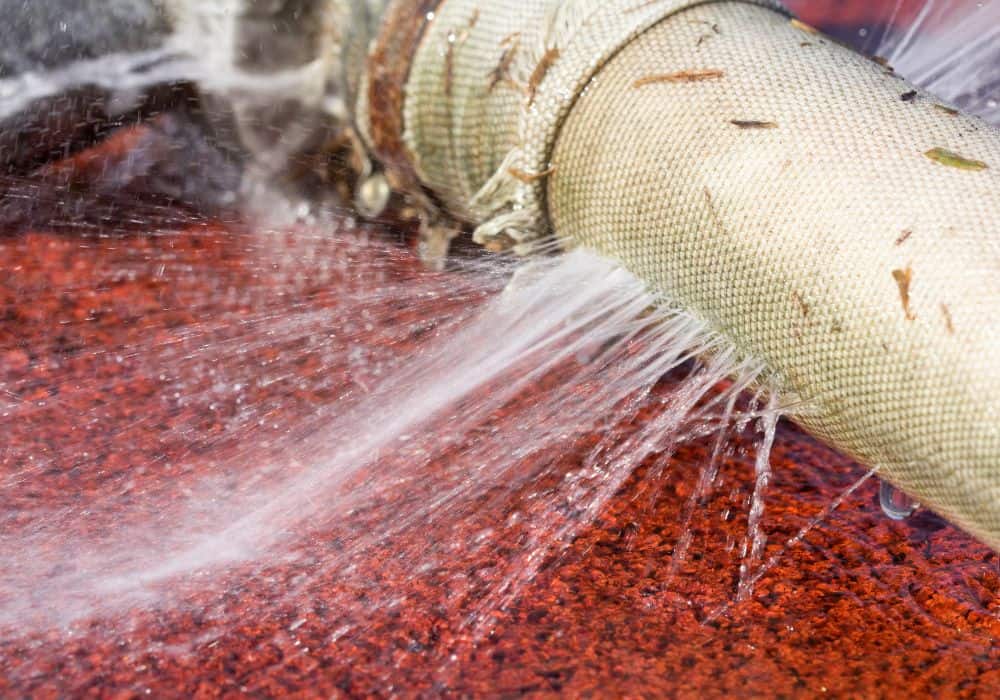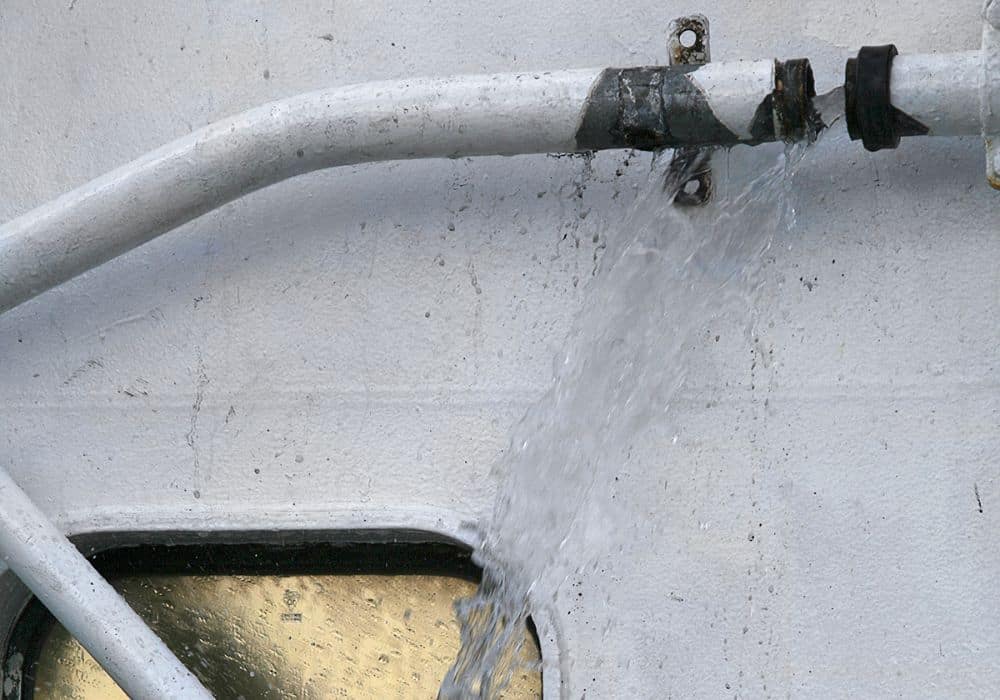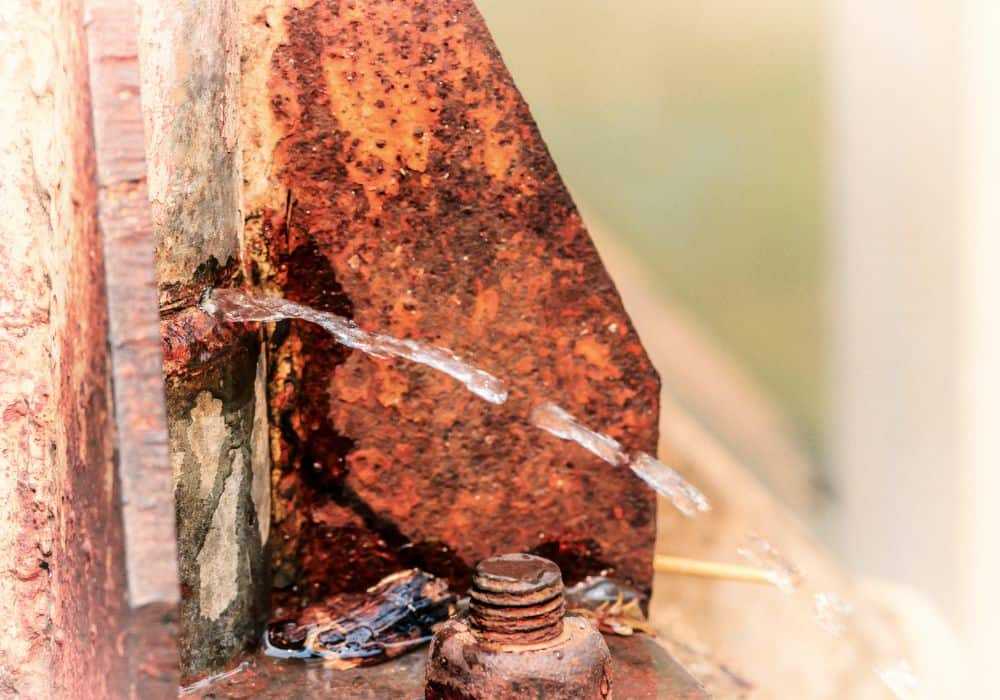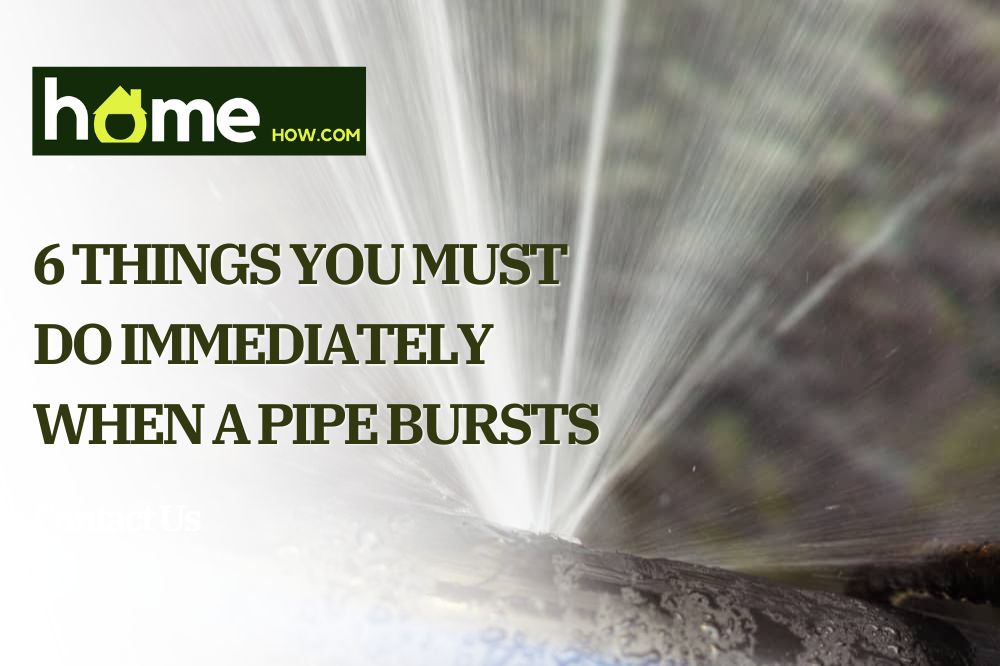Don’t know what to do when you come home to large puddles of water on the floor caused by a leaking or burst pipe? Scary as this may seem, when emergencies like this happen, don’t panic. Here is what you should do:
First, locate the water shut-off valve and switch it off to stop the flow of water. Next, clean up the mess. Only after doing this should you proceed to locate the damaged pipe and perform a quick fix using the steps we discussed. Then, proceed to get a professional to examine the damage, this will prevent further damage and protect against future occurrences.
We’ve compiled tips and expert opinions on how to deal with pipe bursts. Here you’ll learn how to recognize signs of pipe bursts and how to protect your pipes and home from water damage.
What Should You Do When a Pipe Bursts?

You would be surprised to find out that pipe bursts are quite a popular occurrence in many homes, so if you’re in the same dilemma, like every other plumbing issue, timing is essential.
Prompt action will prevent extreme damage, costly repairs, and avoidable hassles. If a pipe bursts in your home and causes water leakage, here’s what you should do to reduce water damage:
Step 1: Stop the Water Flow
The first step to take when you notice puddles of water or water dripping anywhere in your home; whether it’s from the drains, faucets, walls, or floors; switch off the water supply before doing anything else. This helps prevent the damage from escalating.
Try to locate the main water valve. Many times, you’d find it in the basement or crawl space, near the water heater. It could also be located on a metal plate on the curb near your house.
Once the water source is turned off, proceed to drain any water remaining in your pipes by opening the taps, faucets, and other water outlets. This also includes flushing the toilet several times.
Also, ensure to turn off the cold taps before the water heating system and fixtures. This would reduce the pressure on the pipes and stop any leakage from continuing.
Step 2: Disconnect the Electrical System
Now that the water source is off and you’ve drained all the pipes of residual water, your next move is to locate the electrical main service panel and turn off the electricity. You’d find this box in the basement, garage, laundry room, or outside the house. This is a necessary precaution as the water from the leakage may have affected a socket, circuit breaker, or even the breaker box.
Step 3: Locate the Affected Pipe
Now, look around the house to identify the source of the problem. We do not recommend that you attempt to repair the damaged pipe if you have no prior plumbing experience. Still, you can perform the following temporary fix while waiting for the plumber to arrive.
Ensure the main valve is turned off.
Seal off the source of the leak by binding the area with self-bonding silicone repair tape, electrical tape, sleeve clamps, or some epoxy putty, if you have any. Allow it to set and you can turn on the water for a short period, if necessary.
However, if you have some plumbing know-how, you can attach a quick-connection repair unit or repair sleeve. All you need to do is;
- Cut out the broken part of the pipe.
- Slip on the quick-connection repair unit sleeve to connect both ends of the cut pipe.
- Fasten the fitting to the tube with hold-down clips.
- Switch on the water supply and check for any further leakage.
Step 4: Clean up the Spillage

After shutting the mains off, the next thing is to clean up the mess. This would prevent moisture-related damage like the growth of mold and mildew. Mop up any puddle of water from the floors. Place a bucket under any drip from drains or pipes.
To dry up dampness from the walls, you can use moisture absorbers or improve air circulation by opening the windows to replace the damp, musty smell. You can also increase the heating if you have radiators or call a professional drying crew.
Step 5: Call The Experts
This is where you bring in the experts. For most plumbing issues, especially a burst pipe, it is best you let a plumber handle the repairs. You may also need to bring in an electrician if the leaking water has affected the electrical system.
As a homeowner, having the contact information of a plumber and an electrician is essential. It is good to have one or more handy even if you don’t need the services at the time. If not, you can ask your friends and family for recommendations.
Step 6: Inspect and Document
Check for collateral damage. Water issues always cause damage somewhere in the house. So even if you don’t notice any visible damage in the affected room, check the others too.
Ensure you take notes of the affected pipes and any damage in your house with pictures, videos, and measurements of the affected area before fixing or cleaning up. These records will help when filing an insurance claim. Also, document your conversations with your plumber and the insurance company.
- Shutting off the water supply from the main valve will give you time to figure out how to curb the damage.
- Always indicate with a tag when you turn off the water supply, so everyone in your home is aware of the issue and knows what to do.
3 Causes of Pipe Bursts
Pipe bursts are attributable to a number of reasons; some are more common than the rest. Here are the common factors that cause the bursting of pipes.
1. Severely low temperatures
A drop in temperature is the most common cause of burst pipes, especially during winter. Frozen water expands and increases the pressure in the pipes, causing them to burst sooner or later.
2. Pipe Corrosion and Congestion
Corrosion has been directly or indirectly implicated in most plumbing issues, including pipe bursts. Corrosion weakens the pipes, leading to rust, clogs, and leaks.
Also, clogs, when present, increase the water pressure in pipes. The build-up of this pressure over time causes the tube to leak or burst.
3. Pipe Movements
Shifting of pipes can cause bursts or leaks. Most of the time, these shifts happen by accident or without notice. Contraction and expansion of pipes due to temperature changes, increase in water pressure, repair to other parts of the plumbing system, or even during home remodeling are why pipes move.
5 Ways to Identify a Burst Pipe
A large puddle of water or damp patches on the walls indicates that you have a water problem. Other signs are hardly noticeable, especially if you aren’t in the plumbing business. However, you’d notice any issue if you routinely inspect the plumbing system. Some of these signs include:
1. Water Puddles
It is definitely a burst pipe if you notice a puddle of water on the floor, around the kitchen sink, toilet, or bathtub. Also, if you see water dripping onto the floor from overhead spaces or water outlets, a pipe could be leaking.
2. Wall Patches
Damp patches, black mold, rotting wood, and other signs of water damage in walls could be due to leaky pipes.
3. Inconsistent Water Pressure
The way water travels through the pipe and out of the outlets can tell you if there is a problem. If the water pressure drops for no reason, you may have a leaky pipe somewhere.
4. Noisy Pipes
Metallic clangs, rattling, or squeaking means a pipe is moving or a fitting is loose, which can cause leaks. Also, if you hear a rush of water through pipes, it hints that a pipe is dripping.
5. Poor Quality of Water

You can also tell from the water coming out of your faucets. It could mean several things if it is colored, has a smell, or sounds. You have to look out for these signs and be sure if it is indeed due to corrosion and/or leaks. It is likely a leak if it is reddish brown and smells like metal.
4 Ways to Prevent Pipes from Bursting
Now that you know the signs to look out for and what causes pipe bursts, you can prevent them from happening. Here’s how to do so:
1. Routine Inspection
You’d notice any faults and or issues that may result in pipe bursts if you check your plumbing system frequently.
2. Make Necessary Repairs When Due
If you notice weak or corroded pipes or any sign of water leakage, fix it immediately. If you live in an old house, you may need to completely overhaul the plumbing system.
3. Provide Adequate Insulation
Insulating areas where the pipes run in your home, like the basement, crawl spaces, and the mechanical room, with foam, will help prevent the water from freezing and the pipes from bursting.
4. Keep the Water Trickling
At night, keep your faucets open to allow water to trickle through, especially during winter. This will keep the water flowing, making it less prone to freezing.
Conclusion
Burst pipes are emergencies and should be handled as such. If you ever have a burst pipe in your home, do these to prevent the leaking water from damaging your walls, floors, and properties:
- Switch off the water and power mains valve.
- Look for the affected pipe and fix the damage using silicone repair tape, sleeve clamps, duct tape, or epoxy putty. You can fix a quick-connection repair unit or a repair sleeve for a more effective repair.
- Clean up any puddles of water and aerate the room.
- Inspect and document any damage.
You can do these on your own but still, it’s best to call for professional help to repair the damaged pipe and for your insurance company to file a claim. Remember, every second counts.
